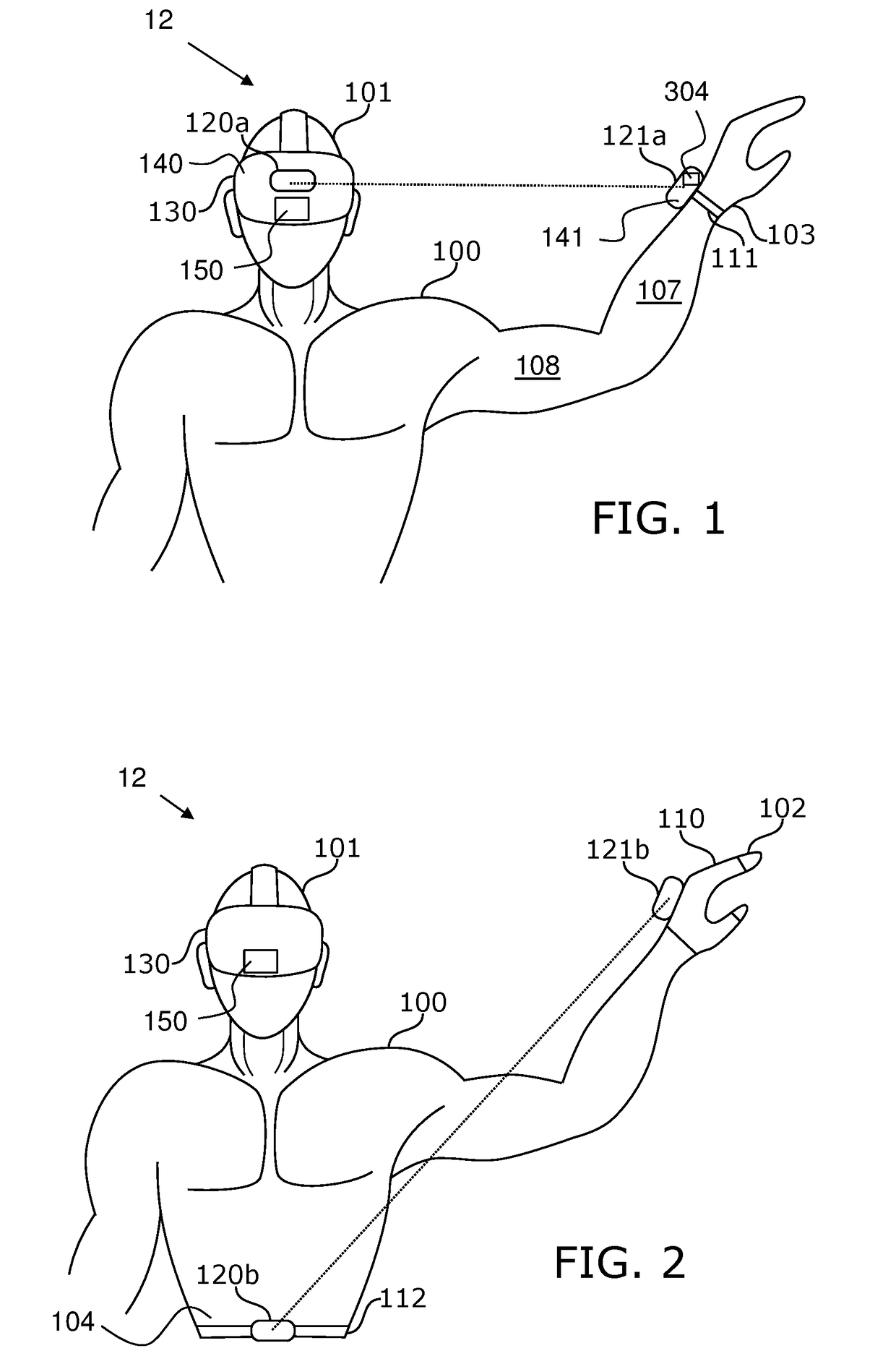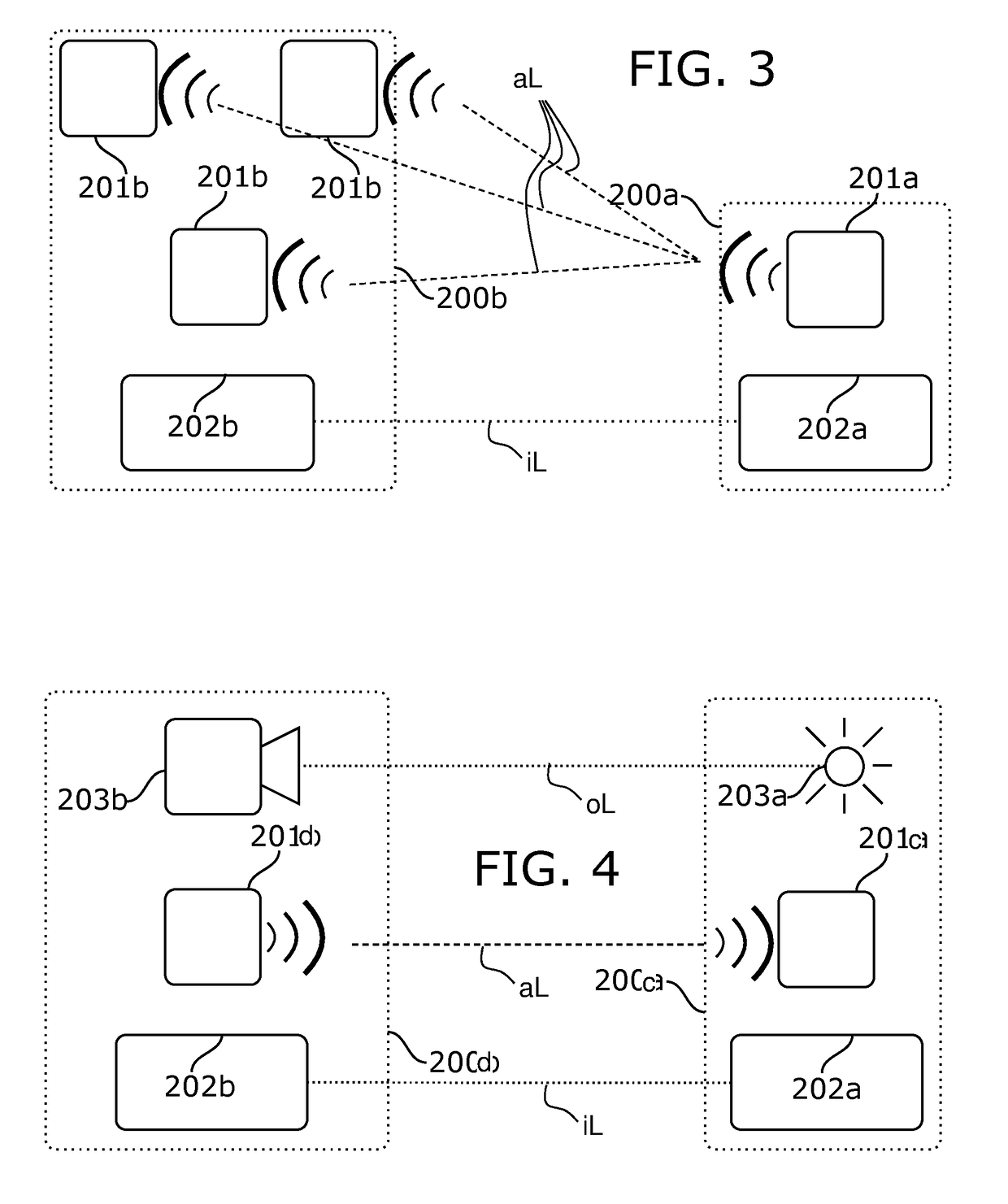Wearable motion tracking system
a motion tracking and wearable technology, applied in the field of wearable motion tracking systems, can solve the problems of lowering the appeal of such systems in home consumer products, affecting the use of users, and the required calibration is clearly not suitable for non-professional applications, and achieves the effect of stable and reliable, fast measuremen
- Summary
- Abstract
- Description
- Claims
- Application Information
AI Technical Summary
Benefits of technology
Problems solved by technology
Method used
Image
Examples
Embodiment Construction
[0088]The following description and examples further illustrate the present invention, but should not be interpreted as limiting its scope. Preferred embodiments are described with reference to FIGS. 1 to 6. The figures show schematic illustrations of preferred embodiments. The same reference signs in the figures designate the same components or components with the same technical effect.
[0089]FIG. 1 shows a first embodiment of a wearable motion tracking system 12 according to invention. Said wearable motion tracking system 12 comprises a first measurement device 120a (the tracking device) that is attached to, e.g. integrated into, a head-mounted display 130 on a first body part of a user 100, the first body part being a head 101 of the user 100. The head-mounted display 130 is, in the first embodiment, a reference unit that sets the reference frame in which the tracking is done. A second measurement device 121a (the tracked device) is attached to a wristband 111 disposed on a second...
PUM
 Login to View More
Login to View More Abstract
Description
Claims
Application Information
 Login to View More
Login to View More - R&D
- Intellectual Property
- Life Sciences
- Materials
- Tech Scout
- Unparalleled Data Quality
- Higher Quality Content
- 60% Fewer Hallucinations
Browse by: Latest US Patents, China's latest patents, Technical Efficacy Thesaurus, Application Domain, Technology Topic, Popular Technical Reports.
© 2025 PatSnap. All rights reserved.Legal|Privacy policy|Modern Slavery Act Transparency Statement|Sitemap|About US| Contact US: help@patsnap.com



